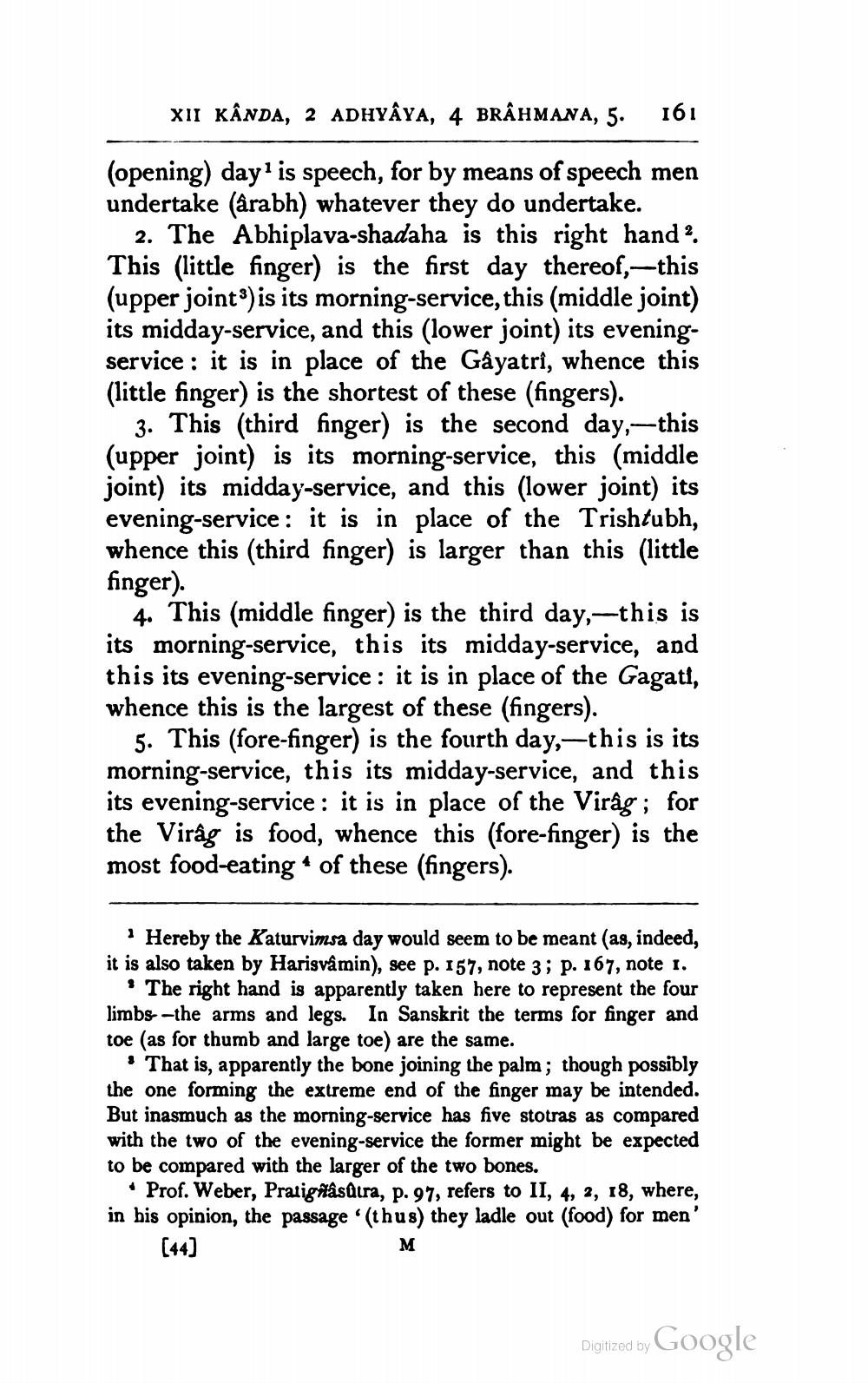________________
XII KÂNDA, 2 ADHYÂYA, 4 BRAHMANA, 5.
161
(opening) dayis speech, for by means of speech men undertake (arabh) whatever they do undertake.
2. The Abhiplava-shadaha is this right hand ? This little finger) is the first day thereof,—this (upper joints) is its morning-service, this (middle joint) its midday-service, and this (lower joint) its eveningservice : it is in place of the Gayatri, whence this (little finger) is the shortest of these (fingers).
3. This (third finger) is the second day,—this (upper joint) is its morning-service, this (middle joint) its midday-service, and this (lower joint) its evening-service: it is in place of the Trishtubh, whence this (third finger) is larger than this (little finger).
4. This (middle finger) is the third day,—this is its morning-service, this its midday-service, and this its evening-service: it is in place of the Gagati, whence this is the largest of these (fingers).
5. This (fore-finger) is the fourth day,--this is its morning-service, this its midday-service, and this its evening-service: it is in place of the Virág ; for the Virág is food, whence this (fore-finger) is the most food-eating of these (fingers).
· Hereby the Katurvimsa day would seem to be meant (as, indeed, it is also taken by Harisvamin), see p. 157, note 3; p. 167, note 1.
The right hand is apparently taken here to represent the four limbs--the arms and legs. In Sanskrit the terms for finger and toe (as for thumb and large toe) are the same.
"That is, apparently the bone joining the palm; though possibly the one forming the extreme end of the finger may be intended. But inasmuch as the morning-service has five stotras as compared with the two of the evening-service the former might be expected to be compared with the larger of the two bones.
• Prof. Weber, Pratigasura, p. 97, refers to II, 4, 2, 18, where, in bis opinion, the passage '(thus) they ladle out (food) for men' (44)
M
Digitized by Google




